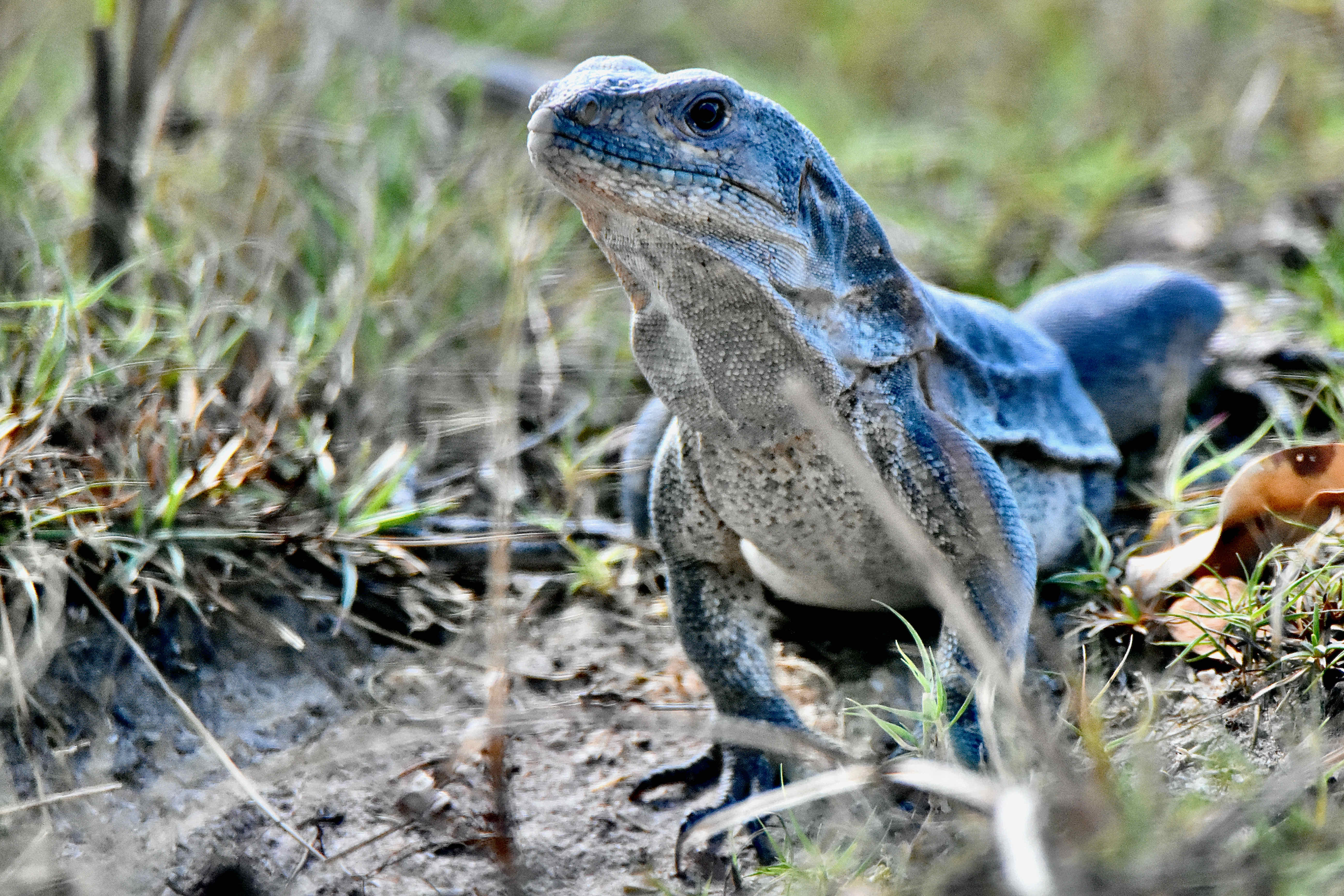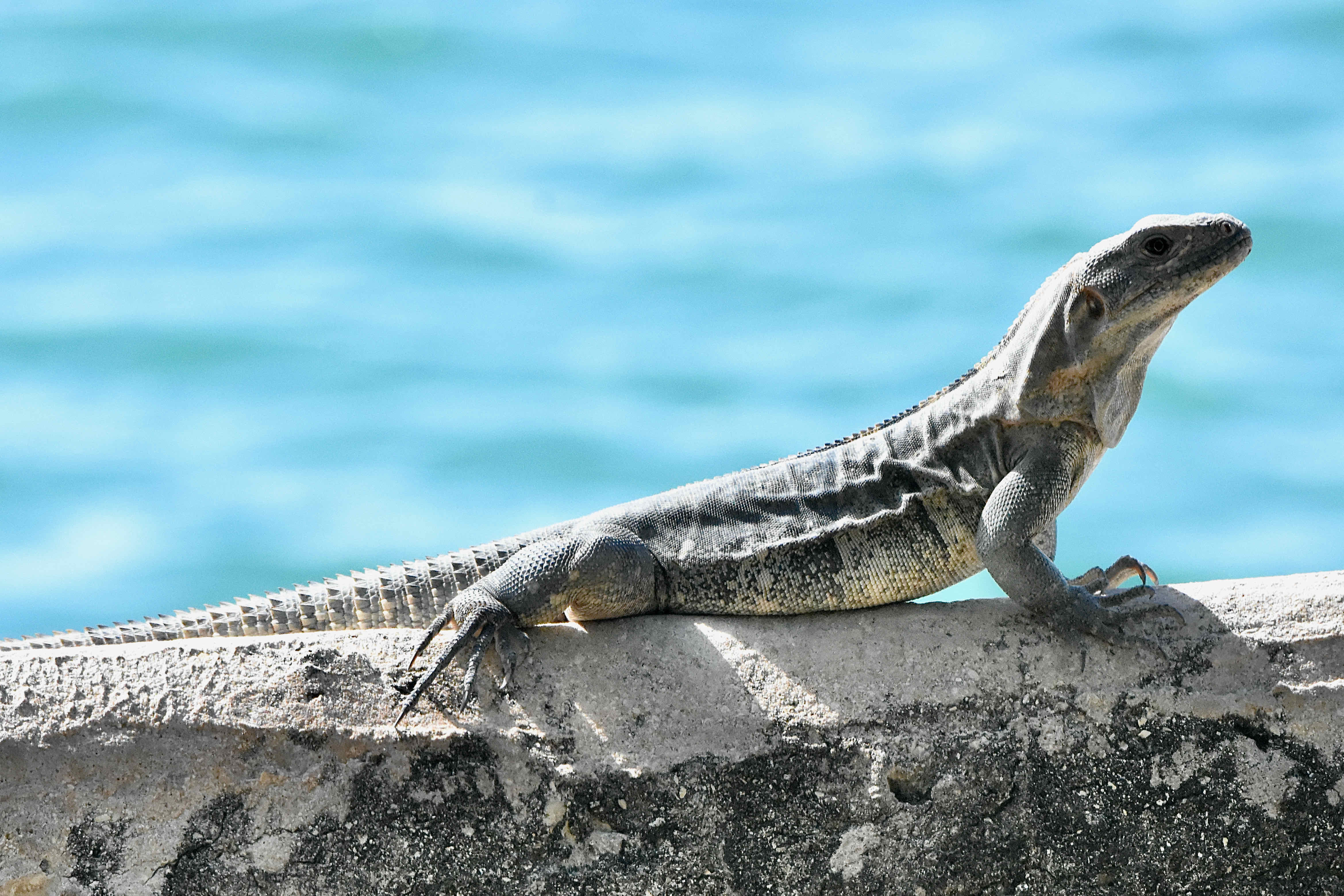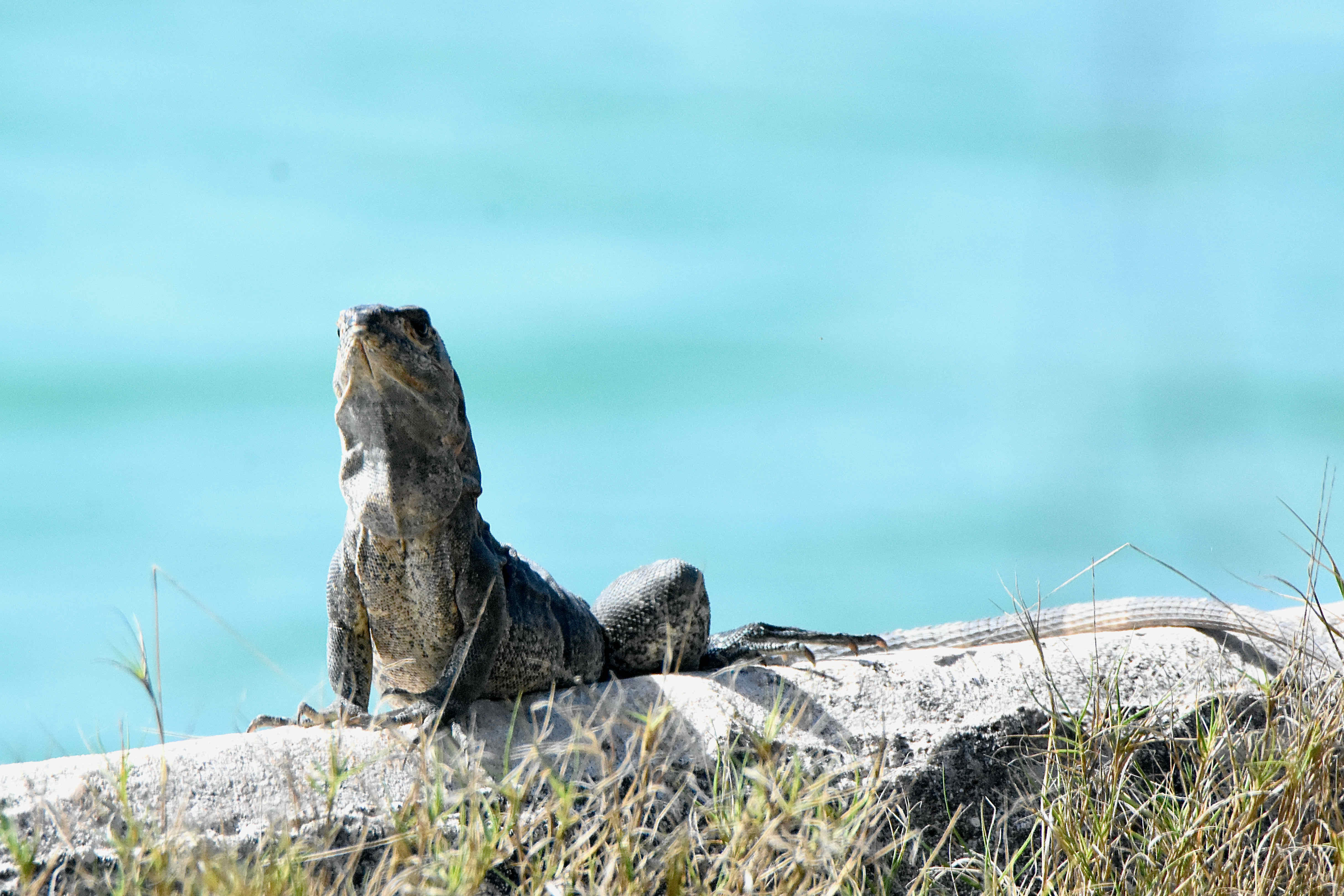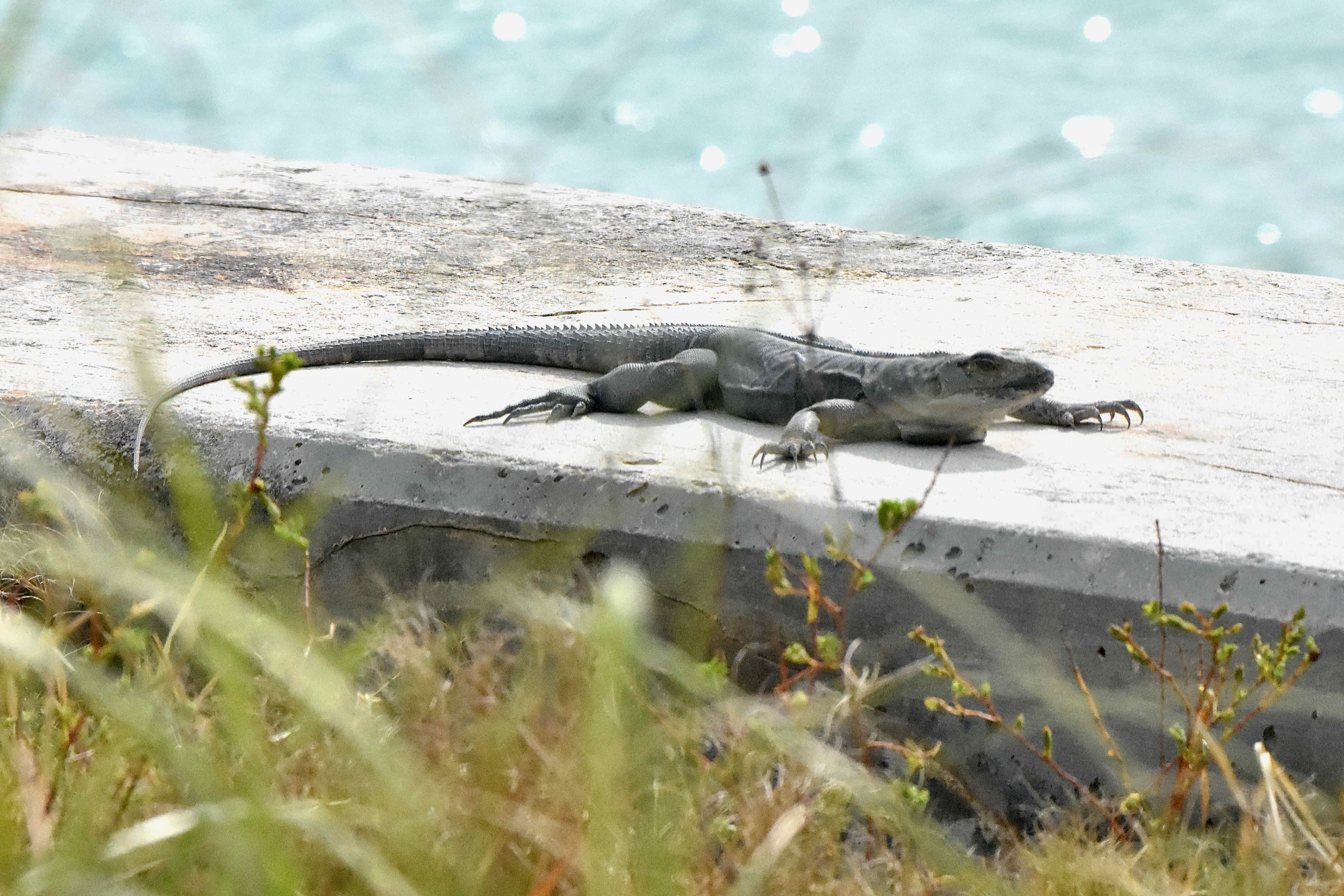
Black spiny-tailed iguana, photographed at Bill Baggs Cape Florida State Park, Key Biscayne, Miami-Dade County, in February 2019.
There are all kind of claims about how fleet a foot certain animals can be. Many are exaggerations. The black spiny-tailed iguana, Ctenosaura similis, however,is seriously fast. At a peak speed of 21 mph, it's the fastest running lizard on the planet, the Usain Bolt of cold-blooded creatures.
By comparison, Bolt will hit about 28 miles an hour while sprinting the 100 meters; a runner breaking a four-minute mile needs to hit at least 15 mph.
In any regard, it is invasive species, a native of Mexico and Central America that grabbed a foothold in South Florida circa 1978. According to the Florida Fish and Wildlife Conservation Commission, the black spiny-tailed has established populations in at least five counties, including Broward and Miami-Dade, into the Keys as far south as No Name Key and along the West Coast from Manatee County south. They numbered in the tens of thousand as far back as a decade ago and the population most likely has only increased during the intervening years.
How did it get here? According for the Florida Museum of Natural History, there were likely several independent and illegal releases. This isn't a lizard normally imported for the pet trade because it's too aggressive; they don't like being handled and will bite and thrash about with its spiny tail if held. It's possible that someone believed that a black would behave similarly to their more pet friendly green iguana cousins. Black spiny-taileds are also green when young, so it's possible that someone thought they had a green iguana when they really had a black. South Florida, with its warm climate, sandy soil and ample open space, though not necessarily natural open space, was the perfect new home for the black spiny-tailed iguana.
The photos on this page tell you several things about the black spiny-tailed iguana. It's far less elaborately attired than green iguanas, for one. The tail certainly is spiny, and those claws on the front legs tell you this animal is not one to trifle with.
They have massive appetites and are known to have a wide ranging diet that even includes the eggs of their own kind. The will eat leaves, fruit and flowers, bugs, crabs, fish, bats, rodents, birds, bird eggs and young, sea turtle hatchling, lizards and young black spiny-taileds. They will eat Brazilian pepper, the nasty invasive shrub, helping to disperse Brazilian pepper seeds. Their diet shifts from mostly bugs when young to more plants as they age.
Black spiny-tailed iguanas can be as long as four feet, most shorter, males longer than females. They are green when young, growing progressively darker as they age, but they can vary in color considerably, depending on their sex, whether they've been basking (which lightens them up) and other factors. Their tails are ringed with sharp, curved spines, the inspiration for their name.
They live relatively long lives, up to 25 years. They reach maturity in three or four years. Females after mating dig burrows 18 or 19 inches deep, where they will deposit between two and 25 eggs. Females will guard their nests for a period to ensure another female doesn't dig it up. Once hatched, the young iguanas will dig themselves out in about a week. Black spiny-tailed iguanas live in colonies with a dominant male, but other males will live within the group and each with his own slice of territory.
Other common names for the black spiny-tailed: wish willy. They are members of Iguanadae, the iguana family.
Bill Baggs Cape Florida State Park



